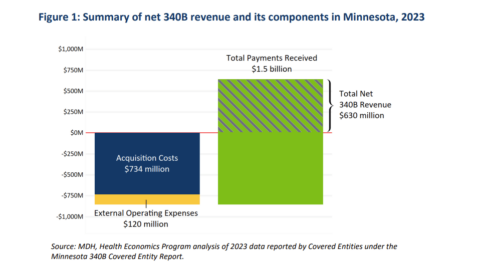Sorry for the surprise absence of Cost Curve yesterday. Turns out, there really wasn’t much to say, and I didn’t want to clog your inbox.
Speaking of absences, Cost Curve is slated to take a long Labor Day weekend: I’ll publish Monday and Tuesday, then take the rest of the week unless something really wild happens. It’s move-in week for my new Terrier.
Confession: now that the DNC is over and the presidential race is officially in the final stretch, I’m not sure how to handle the drug-pricing election stuff that we’re going to have to deal with over the next couple of months.
It’s clear where each of the candidates stand. Kalama Harris wants to expand the IRA, maybe moving up timelines and expanding the popular elements to the commercial market**. These changes are all generally either impossible or meaningless, and I’m not sure it’s worth wasting too much breath there.
I suspect the same “impossible or meaningless” critique can be aimed at Donald Trump, whose signature solution is international reference pricing. It’s a plan he’s tried before, only to run into legal obstacles. His advisors think those hurdles can be cleared if he gets another crack at it, but that still feels like a longshot.
Those positions aren’t the part that I’m unsure about. I’ll keep writing about those if and when they get refined or amplified.
No, I’m trying to figure out how to handle the various attacks on those policies.
Republicans have decided that they’re going to attack Harris for “Soviet-style” price controls, which, adjusting for the usual political hyperbole, feels in-bounds on its face. But there’s a huge underlying hypocrisy here when comparing Harris’ thinking to Trump’s. International reference pricing means importing prices from other countries … countries with government-set prices that are established in a far more heavy-handed way.
So I’m inclined to just ignore any attacks on Harris that go overboard in dogging her for price controls unless there’s some sort of acknowledgment that the Republican nominee has some similar issues with his worldview.
That’s not a blanket policy or a political statement. I won’t want to deprive you all of influential or nuanced takes. But as the hollering gets louder in advance of November 5, I’m going to try to filter out the bad-faith stuff.
** Given that the topic didn’t make Harris’ speech last night, it’s also worth wondering if drug pricing is actually a priority. I know that much has been made of how light on policy this election has been, in general, but I just don’t see a lot of passion for lawmaking here.
This is a thoughtful and relatively comprehensive take from Bloomberg Law looking at how new-look PBMs are beginning to gain ground.
It’s probably overly rosy about the demise of the big 3 PBMs: the Teamsters example that leads the story dates back the better part of a decade, I’m skeptical of survey data suggesting that a sea change is imminent, and there are absolutely big 3 efforts to refine their model to adjust to changing expectations.
But the vibes in the story — the concerns about cost, the concerns about lawsuits, the concerns about opacity — all seem to be on the money.
Elsewhere:
Reuters is looking ahead to the next batch of price controls. I don’t think there’s anything in the piece that we haven’t discussed here, but it’s worth noting that attention is beginning to turn to the next round (which will kick off on or before Feb. 1). Of note, Reuters talks about two medicines — Vraylar and Venclexta — that aren’t on my current top 15 list but aren’t unreasonable meds to think about. There’s also some happy talk about limited impact, but my guess is that optimism is going to get a lot more tempered as people start playing out the scenarios for each individual drug and how HHS’ approach may change for the 2027 year.
This Axios look at the current state of the gene therapy market showcases the paradox gene therapy is trapped in: the science remains incredible, the commercial model remains elusive. I have yet to see a good summary of how we get out of the current morass, but this is a field I’m rooting for, big-time.
I haven’t paid too much attention to the FDA’s effort to get away from the need for clinical studies as a prerequisite to deem a biosimilar “interchangeable,” but the FTC’s endorsement of that approach turned some heads this week. Hoping someone provides some commentary one of these days on how and where this policy — if implemented — would really make a difference.
Carl Schmid, of HIV+Hepatitis Policy Institute fame, has a great Real Clear op-ed calling on Kamala Harris to push HHS from backing off on rules that enable copay accumulator programs (new rules on the practice are due “any day,” according to Schmid). Copay accumulators are one of those topics that ought to be a cause célèbre but aren’t, probably because the topic is just not intuitive. So it’s good to have explanatory pieces like Schmid’s out there laying out the stakes.
Header image via Flickr user Lorie Shaull.
Thanks for reading this far. I’m always flattered when folks share all or part of Cost Curve. All I ask is for a mention or tag. Bonus points if you can direct someone to the subscription page.





